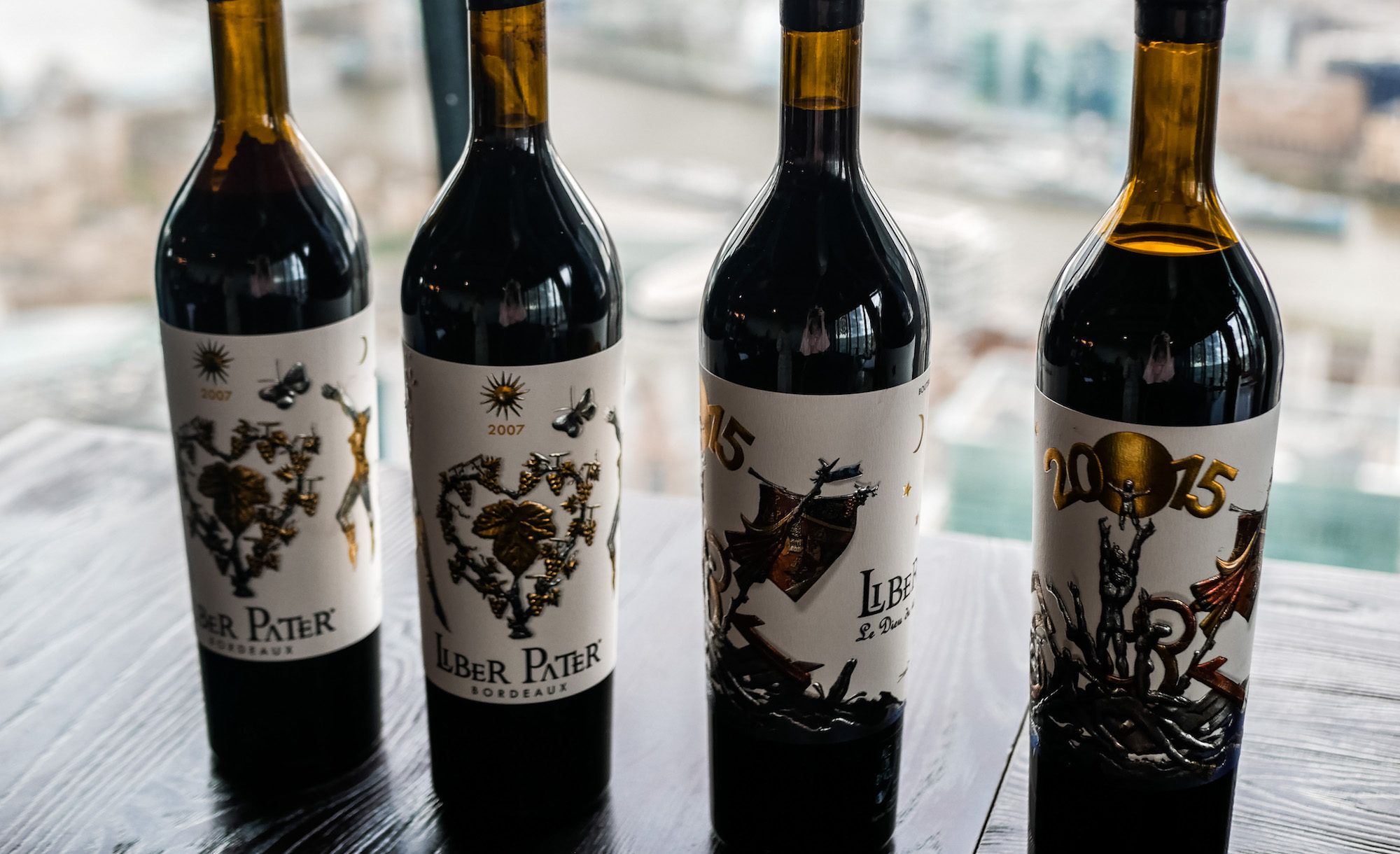“I believe great wines can be recognised by anyone,” said Justin Knock MW, presenting Screaming Eagle 2016.
So there I am, all set for OenoTrade’s first ever tasting, getting into the lift of the Leadenhall Building (better known as the Cheesegrater) to be whizzed up to Level 42 (the floor number, not the 80s band).
“You’re in the fastest lift in Europe,” the attendant tells me, as I gaze at the blur outside, suitably impressed.
“Mate, you’re finally going up in the world,” I tell myself.
As I walk into the tasting area with its stunning views of London and beyond, I think – to hell with Coronavirus and Brexit and Trump – life’s not so bad after all.
The smile on my face soon got wider. I’d been expecting a good tasting from OenoTrade, which before its current journey into the UK on-trade started life as a wine investment company with bases in London, Tuscany and Bordeaux.
What I got was an almost overwhelming greatest hits of the high-end wine world, all laid out in front of me in the spacious surrounds of Level 42, reminding me of the time years ago I found the school tuck-shop door open on a quiet Sunday afternoon.
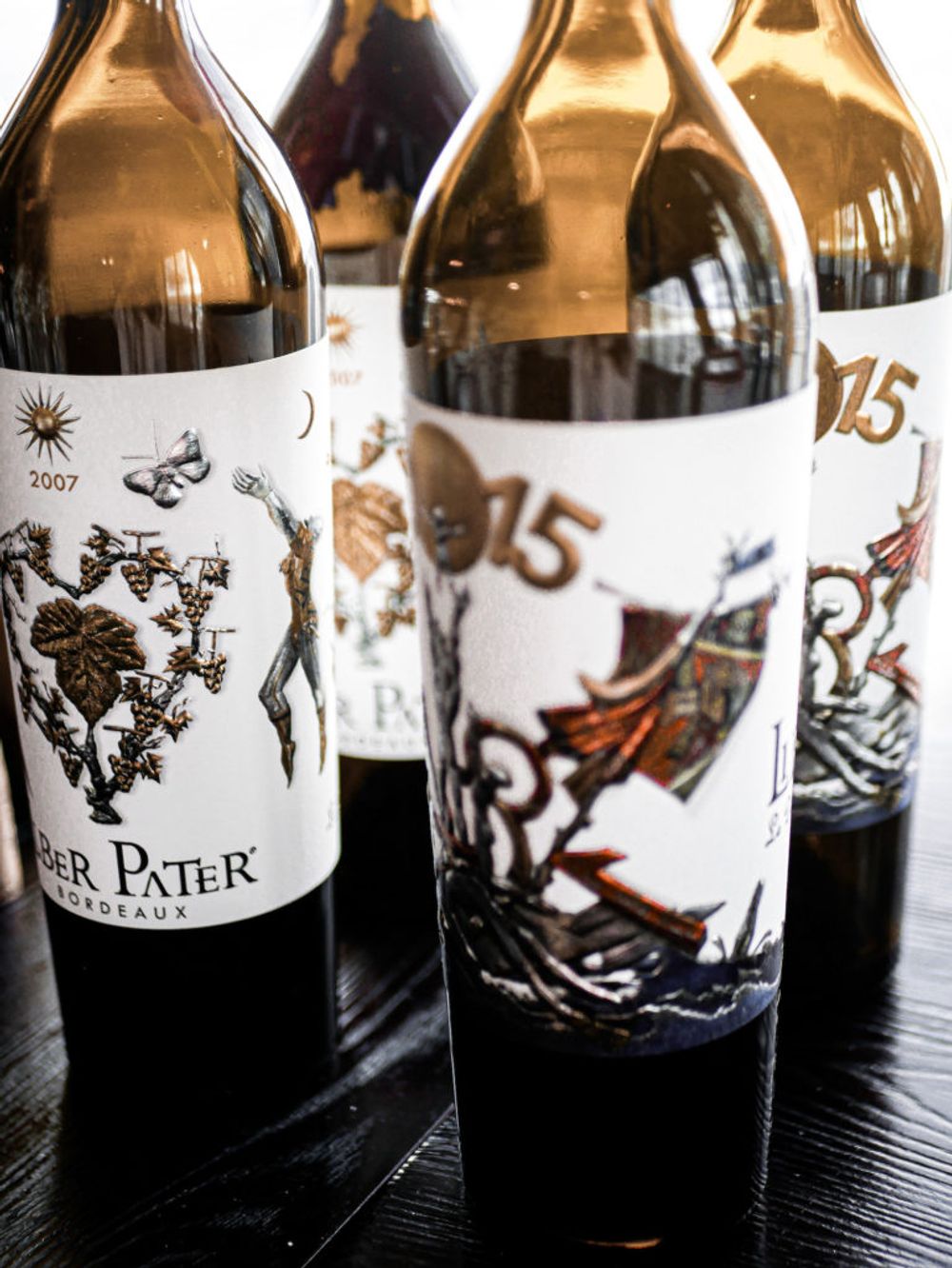
Liber Pater: just some of the many delights on show at the tasting. The 2015 is the world’s most expensive wine, released at €30,000 a bottle
The OenoTrade portfolio has been carefully curated, with a close eye kept on the well-heeled but discerning consumer, with the focus on providing an equally high level service to the consumer.
“We source all our wines from the producer direct or from La Place in Bordeaux, ensuring the wine is pristine in quality. We allow clients to order single bottles and cases, to help with their stock holding. For smaller clients we have a consignment scheme, allowing them to manage their stocks without cash flow issues,” says Director of Trade Olivier Gasselin.
There were a few surprises here. I had expected quite a few Champagne agencies, if only because the drink is so status-oriented and bling-worthy – but there was just one, the excellent Brimancourt. Likewise Bordeaux, with Clavis Orea the sole producer present. However there was lots of Burgundy, lots of Napa, unsurprisingly, a strong Italy hand (Zyme, Castellare di Castellina, Bibi Graetz and Poderi Gianni Gagliardo) and a decent Spanish one (Rioja’s Bodega Contador and from Ribera del Duero, the impressive French-run Dominio de Es).
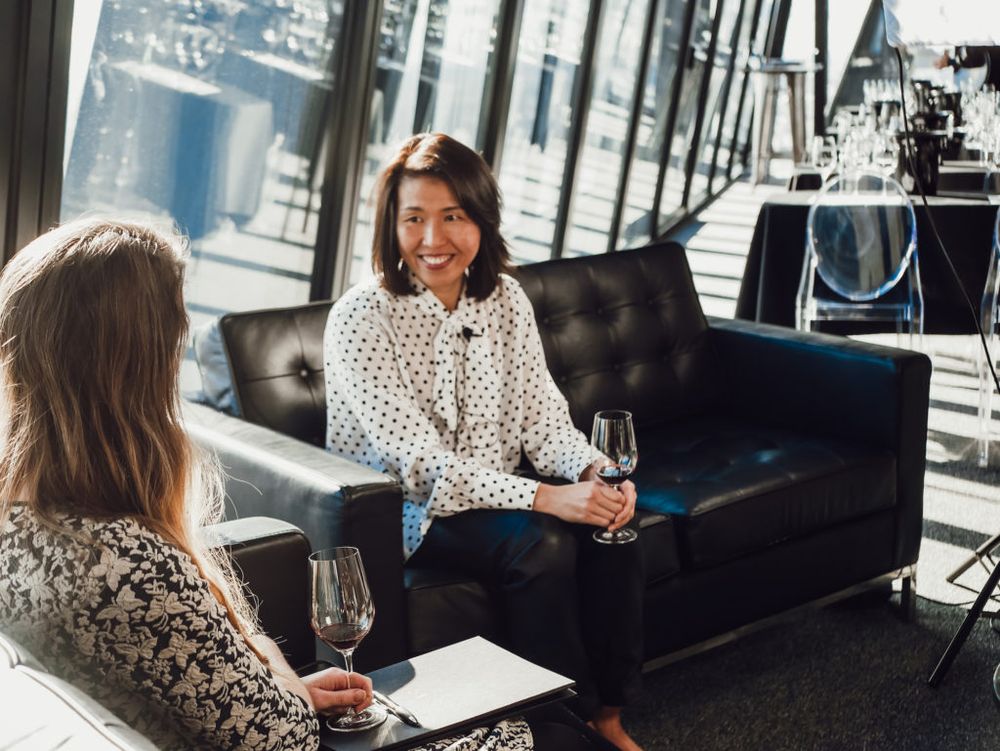
Shirley Tan of Silver Heights in China
Penfolds was there with Grange of course, but there was also the excellent Chateau Belle-Vue from Lebanon – founded in the mid 1990s by former banker Naji Boutros and his wife in the mountains near Beirut. From China, there is Silver Heights. Founded in Ningxia by father and daughter team Lin and Emma Gau 13 years ago and specialising in French – mainly Bordeaux – varieties, it is now rightly regarded as one of the stars of China’s fast-emerging wine producing scene, and illustrates how far Chinese winemaking has come. Their 2017 Reserve Chardonnay was served to President Macron during his state visit there last year and I’m sure he would have been as impressed as I was; this is a charming wine, very fresh and pretty, with just 11.5% alcohol.
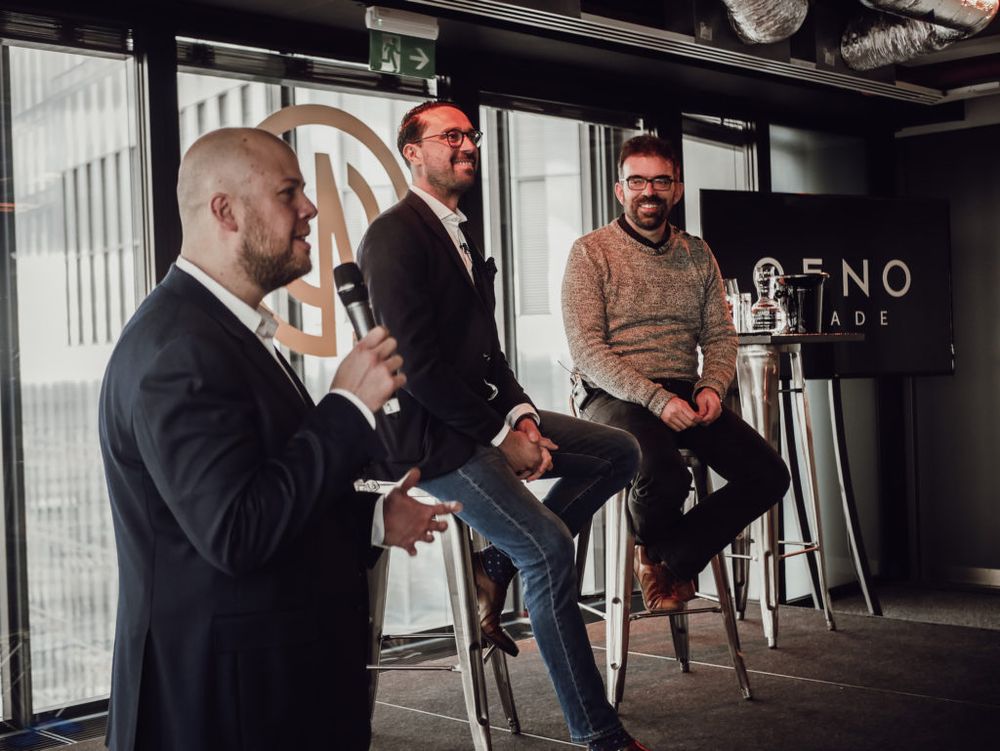
Oeno director Daniel Carnio introduces winemaker Loic Pasquet of Liber Pater (far right)
If OenoTrade set out to impress attendees at this tasting, they succeeded – at least with this writer. There was standing room only for the Liber Pater Masterclass hosted by controversial winemaker Loic Pasquet. His mission since 2007 has been to “recreate the taste of pre-phyloxerra Bordeaux” by using traditional, un-grafted, virtually extinct varieties like Tarnay, Petit Vidure, Castets and St-Macaire in his tiny Graves vineyard and blending them together using traditional techniques, including vinification in clay amphora.
The result has been six vintages of quite remarkable wine made in tiny quantities including, famously, 550 bottles of the 2015 vintage, which was released last year priced at around €30,000 a bottle. Basically a field-blend of nine varieties the 2015 – and the 2007 which we also tasted, alongside three barrel samples including the 2018 to be released next year – are remarkable but Pasquet says you can’t really put a price on recreating the past.
“These are wines for eternity,” he shrugged, with typical Gallic modesty.
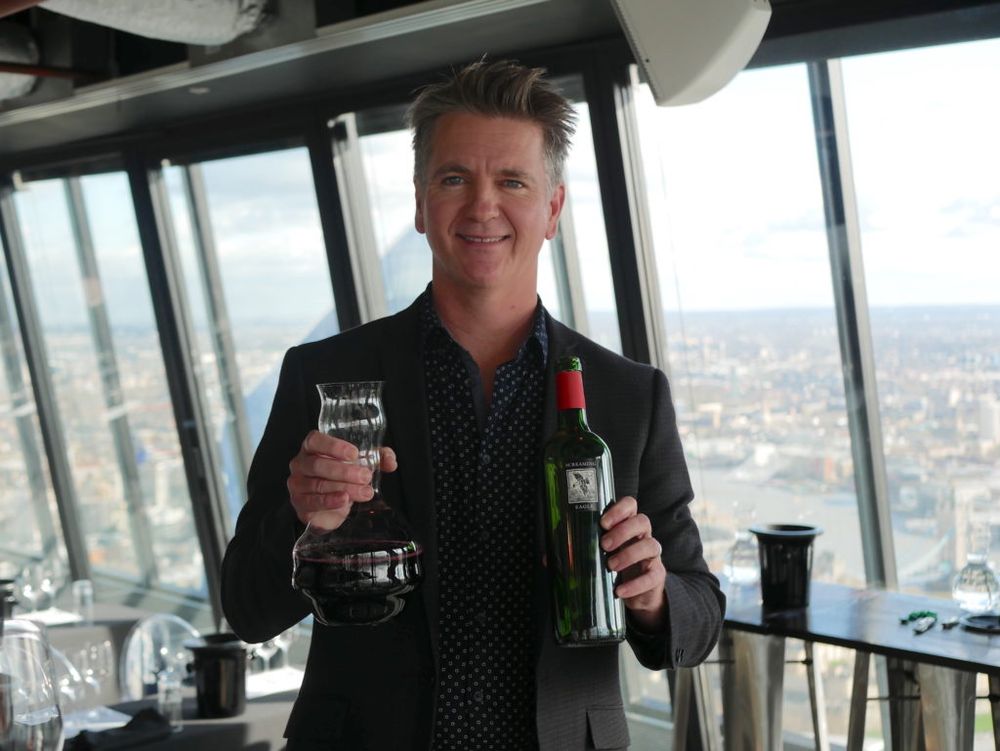
Justin Knock MW presents Screaming Eagle 2016
The next masterclass continued the theme with The World’s Greatest Wines as chosen by the OenoTrade team. There were, in fact, just three including the Super Tuscan Soldera 2011, Screaming Eagle 2016 and more obviously perhaps the sublime, perfect Latour 1982 which lived up to its reputation – and then some. Swallowing my small pour, I was just left gazing at the glass. Sometimes there are no words.
“I believe great wines can be recognised by anyone,” said Justin Knock MW, presenting the wine. I can’t argue with that.
What of the producers and wines that form the backbone of the portfolio? It seems almost churlish to pick out a top ten but always up for a challenge, here are those that made the most impact on me.
Top 10 OenoTrade portfolio wines
Domaine Alain Burguet (Burgundy) – Chambertin-Clos de Beze 2017
A remarkably assured wine sadly made in tiny quantities just 1200 bottles according to Alain – this has wonderfully expansive fruit, great balance and lovely spice showing through. This already tastes fantastic, but just give it a few more years…
Dominio de Es (Ribera del Duero) – Dominio de Es 2016
This winery is the personal project of renowned French winemaker Bertrand Sourdais, whose Domaine de Pallus Loire wines were also showing. The wines are made in tiny quantities from pre-phyloxerra vines; just 4000 bottles for this wine and 600 each for two other wines Sourdais makes at the Domaine. When I tried this wine, I was taken aback by the purity of the (whole cluster) fruit and the great structure. Amongst my notes is the comment: “God, Delicious”. I think I’ll just leave it at that.
Bodega Contador (Rioja) – Benjamin Romeo Contador Rioja 2016
Romeo told me “This is a great Rioja for those who don’t really like Rioja,” and I think he meant it’s because it has a great sense of place, is made from select bunches and in tiny volume – just 7000 bottles of the 2016 – very much the peak of the Bodega Contador range, which admittedly totals only 150,000 bottles or so. This is an amazing wine, with impressive balance and power, yet the 15% alcohol is well-disguised. Robert Parker has given previous vintages 100 points and I can see why.
Bibi Graetz (Toscana) – Colore Bianco 2018
The golden, almost turmeric colour of this wine alerted me this was something special, but the wonderfully fresh and saline taste, and the sheer individuality, was quite something else. Made in tiny quantities from 100% Ansonica, this wine hails from Giglio Island off Tuscany, best known for where the Costa Concordia ran aground in 2012 under the unfortunate Captain Francesco Schettino. The grapes come from 100 year old vines grown on granite and rock and is quite delicious.
Castellare di Castellina (Tuscany) – I Sodi di San Niccolo 2016
A blend of 85% Sangioveto, a local Sangiovese clone, and Malvasia Nera, this impressive, perfectly balanced – hailing from the heart of Chianti Classico – is an absolute stunner, with red and dark berry fruit well supported by firm tannins.
Rocca di Frassinello (Tuscany) – Baffonero 2016
A venture between Castellare di Castellina and Domaines Barons de Rothschild-Lafite, this iconic wine – made from 100% Merlot – rivals Masseto; Baffonero means “Black Moustache” the nickname given to the leader of the local boar hunt. Only 4500 bottles of this full-on 15% wine were made and it is understandably often considered to be amongst the greatest Merlots in the world.
Fattorie dei Dolfi (Tuscany) – Imeneus 2011
Another SuperTuscan, this award-winning wine has huge power but remarkably – given it’s already nine years old – still has plenty of life ahead of it. One to lie down, if you can resist its siren call; failing that, just drink it and then have a good lie down yourself.
Chateau Belle-Vue (Lebanon) – La Renaissance 2011 and Le Chateau 2011
Lebanese reds can have a samey quality to them, being based mostly on French varietals. But done well they really shine and this is what Naji Boutros has done with his mountain vineyard outside Beirut, where restoring the ancient terraced hillside vineyards was just one of the many jobs undertaken in building up the Chateau. The focus here is on small volume, concentrated but linear wines; La Renaissance is a Bordeaux Blend, Le Chateau an appealing fruit-driven blend of Syrah and Cab Franc. High quality, these are hefty wines – in terms of bottle weight, alcohol (15%) and style – but are both at the start of what will be a long life. If you can’t wait, Petite Geste 2017 is a charming, soft but structured blend of SB and Viognier with lots of racy acidity supporting the fruit.

Naji Boutros of Chateau Belle-Vue
So what are OenoTrade’s plans?
New regions, with wineries from South Africa, New Zealand, Portugal, Germany, Morocco and Romania all on the cards. But the first step will be to open in London what will the first of hopefully many wine bars.
“OenoHouse is likely to see its first outlet this year, following the same business plan as for OenoTrade, with our agency wines on the forefront of the selection, as well as the wines our private investors want to liquidate,” says Gasselin. He says the food menu will be curated by top Michelin star chefs from Italy as pop-up menus, using the best and freshest products. “Basically, we plan to carry on partnering some of the finest restaurants in the UK, using unique and exclusive wineries, while trying to provide the slickest service possible,” he says.
I’d say they’re off to a flying start.
